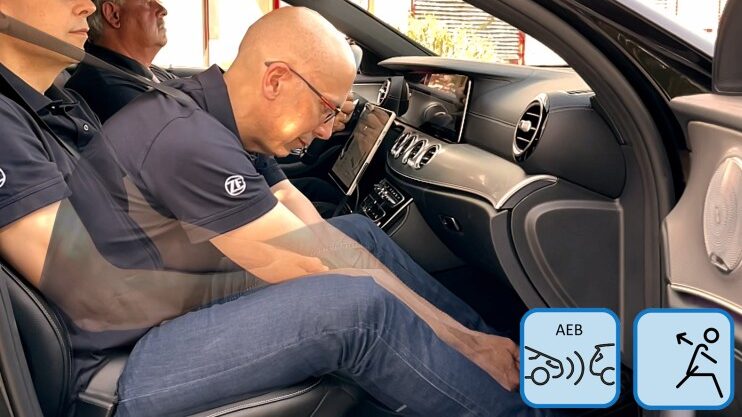To ensure vehicle occupants are seated in the correct way with a properly fitting seatbelt, ZF has developed a new and networked seatbelt that uses vehicle sensors to move the driver and passengers into an optimized seating position before a potential collision occurs.
If the system decides that a potentially dangerous scenario may occur, the belt shifts the occupant in the seat to enhance the functionality of the restraint system. The system centers around the ACR8 (Active Control Retractor) electromechanical belt tensioner which is capable of both reducing belt slack and alerting the driver by vibrating the belt webbing.
To enhance occupant safety further, the seatbelt and the airbag work in combination, with the seatbelt initially restraining the upper body before releasing milliseconds after the impact to ensure the occupant is caught by the airbag.
Once buckled up, the ACR8 actively reduces any perceived belt slack to ensure it fits properly against the occupant. If the vehicle sensors detect a critical driving situation that could lead to hard braking or possibly a collision, the seatbelt system can use this time to enhance protection for the occupant by moving them. This is enabled through a connection to the vehicle sensors and the automatic emergency brake assistant.
The ACR8 seatbelt system can also be used as a haptic signal transmitter, able to send signals to wake up drivers when another system senses they are tired. When switching from automated to manual driving, the ARC8 uses high-frequency pulsing of the seatbelt webbing to alert the driver that they must take control again.
The ACR8 requires no separate NCAP self-certification for use and is also available in a seat-integrated version.
For more ZF news, click here.



